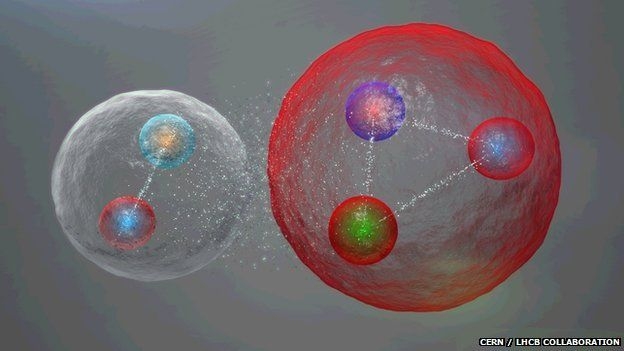Physicists running experiments using the Large Hadron Collider (LHC) have confirmed the existence of a new class of sub-atomic particles called pentaquarks.
The existence of sub-atomic particles called quarks was first theorized in the 1960s by physicists Murray Gell Mann and George Zewig. As Gizmodo explains, quarks come together to form larger particles - such as protons or neutrons - in groups of three.
Physicists speculated that quarks can form other entities as well, like the proposed pentaquark which was believed to consist of four quarks and an anti-quark.

To confirm its existence, physicists observed how a sub-atomic particle called Lambda b decayed into three other particles inside the LHC. The team took note of a transition state in which two previously unidentified particles - Pc(4450)+ and Pc(4380)+ - were identified.
LHC physicist Tomasz Skwarnicki said they examined all possibilities and conclude that they can only be explained by pentaquark states.
Gary Wilkinson, a spokesperson for LHCb, said the pentaquark is not just any new particle. It represents a way to aggregate quarks, namely the fundamental constituents of ordinary protons and neutrons, in a pattern that has never been observed before in over 50 years of experimental searches.
During the mid-2000s, multiple scientific teams claimed to have detected pentaquarks. Unfortunately for the scientific community, subsequent experiments showed those results were actually fluctuations and not real signals like the ones seen from the LHC.
The team has submitted their findings to the Physical Review Letters journal for those wishing to dig deeper.
